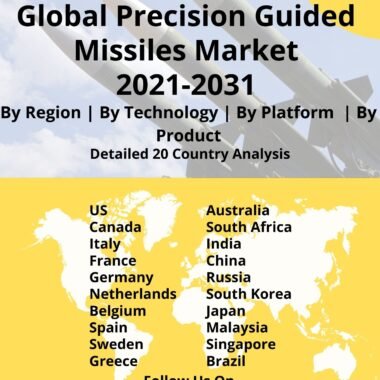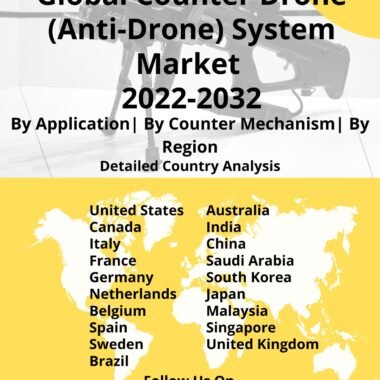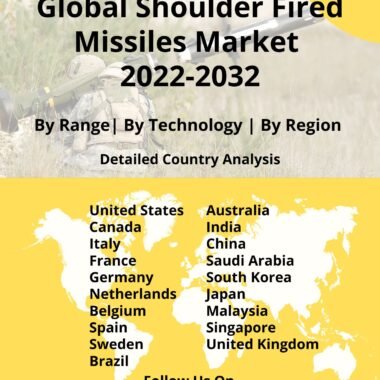Description
Global Infantry Fighting Vehicles Market
Frequently Asked Questions of Defense IFV Market
A form of armored fighting vehicle designed to transport personnel into battle and offer direct-fire support is an infantry fighting vehicle (IFV), also known as a mechanized infantry combat vehicle (MICV). It is armed with a retrofitted cannon of at least 20 millimeters caliber, it is also integrated occasionally with an antitank missile launcher”. A mechanized infantry unit frequently uses IFVs as both the primary weapons system and the means of transportation. Armored personnel carriers (APCs), which are transport vehicles equipped only for self-defense and not expressly designed to engage in independent combat, are different from infantry fighting vehicles. With integrated technologies like a big conventional gun and side ports or a rapid-firing autocannon that allows infantrymen to fire their own weapons while seated, IFVs are intended to be more mobile than tanks.
As per defense market reports, vehicles classified as IFVs, according to the US Army, are known I possess three key features: they must be an off-road mobile, be armed with at least a medium-caliber cannon or an automatic grenade launcher, and the vehicle is poised to be properly protected from small arms fire. It also notes that all IFVs share some traits with an APC and a light tank. An armored vehicle that is “intended to combat with soldiers on board” and “to accompany tanks” is an “IFV,” according to the United Nations Register for Conventional Arms (UNROCA). Since the primary purpose of an IFV is fighting rather than general transportation, UNROCA clearly distinguishes between them and APCs.
Infantry Fighting Vehicles Market Growth
Brewing border conflicts between nations are noted to be one of the key factors that are poised to boost the growth associated with the procurement of infantry fighting vehicles. The Asia pacific is noted to be one of the fastest-growing markets in terms of military procurements owing to the tense geo-political environment and the presence of developing economies. Border tensions between India and China as well as India and Pakistan have ultimately led to India strengthening its border forces according to defense market reports. Substantial growth in defense budgets across the global sectors was also witnessed. This growth in value is poised to serve as one of the key drivers to boost procurement, i.e. an increase in the defense budget translates to a direct increase in procurement which is expected to bolster the growth associated with the infantry fighting vehicles market.
Increased urban warfare is another factor that is responsible for the growth of Infantry Fighting Vehicles within military platoons. The use of this technology is expected to enhance both mobilities as well as speed associated with the vehicle. Therefore, the vehicle can perform multiple operations without speed being a hindrance, especially in situations of urban warfare since the strategic and tactical capability is challenged by a variety of obstacles.
Trends Influencing the IFV-Market Size
One of the key factors that are poised to drive innovation in the Infantry Fighting Vehicles market is the growth in material science engineering and the subsequent research within this domain. The invention of materials like composites is expected to further reduce the weight associated with tactical vehicles hereafter promoting enhanced mobility and agility. Moreover, the growth in technologies like additive manufacturing is also anticipated to serve as a key market driver since it supports the use of automated technologies to produce small components thus promoting the infantry fighting vehicles market growth.
IFV-Market Forecast & Dynamics
The growing defense budget of upcoming economies is noted to be one of the key factors that bolster the growth associated with the infantry fighting vehicles market. The overall growth dynamics of this sector are majorly governed by the increased defense spending which directly translates to increased procurement of military equipment. The growing number of indigenous programs is another factor that is poised to drive local sourcing and as a result, increase employment opportunities as well as GDP contribution for the defense sector. This increase in value is expected to serve as one of the key factors to bolster the defense budget for key nations across the world economy.
Infantry Fighting Vehicles Market Analysis for Recent Developments
Australia is noted to be one of the nations to invest heavily in modernization programs as well as acquisition. The tensions in the APAC region are noted to be one of the key factors driving this growth. According to the Infantry Fighting Vehicles Market analysis, it is noted that up to 450 Infantry Fighting Vehicles of the Australian military are to be purchased and supported by the LAND 400 Phase 3 – Land Combat Vehicle System (Infantry Fighting Vehicle) program. The current M113 Armoured Personnel Carriers, which have been in use since the middle of the 1960s and are no longer equipped to counter the current and rising threats presented in our operating environment, will be replaced by infantry fighting vehicles. When completely delivered, the Infantry Fighting Vehicle will enable the Australian Army to maintain mounted close combat operations as part of a joint force against current and potential threats.
The Market stands as a critical sector within the defense industry, driven by evolving security challenges and the need for agile and well-protected ground forces. IFVs, combining firepower, mobility, and troop-carrying capabilities, play a crucial role in modern military operations. The market is witnessing significant developments in response to the increasing demand for versatile and technologically advanced IFVs that can operate effectively in diverse terrains.
Advancements in armor protection, firepower systems, and communication technologies are reshaping the landscape of infantry fighting vehicles. Enhanced situational awareness, integration of unmanned systems, and increased survivability are key focus areas for IFV manufacturers. Additionally, modularity and adaptability are becoming essential features to accommodate evolving mission requirements and enable swift upgrades to keep pace with emerging threats. The market is marked by international collaborations and partnerships, as defense organizations seek to leverage the expertise of global manufacturers to enhance the capabilities of their ground forces. As geopolitical tensions persist and the nature of warfare evolves, the Global Infantry Fighting Vehicles Market in 2023 reflects a commitment to equipping armed forces with state-of-the-art, mission-adaptable vehicles capable of meeting the challenges of contemporary and future battlefield scenarios.







